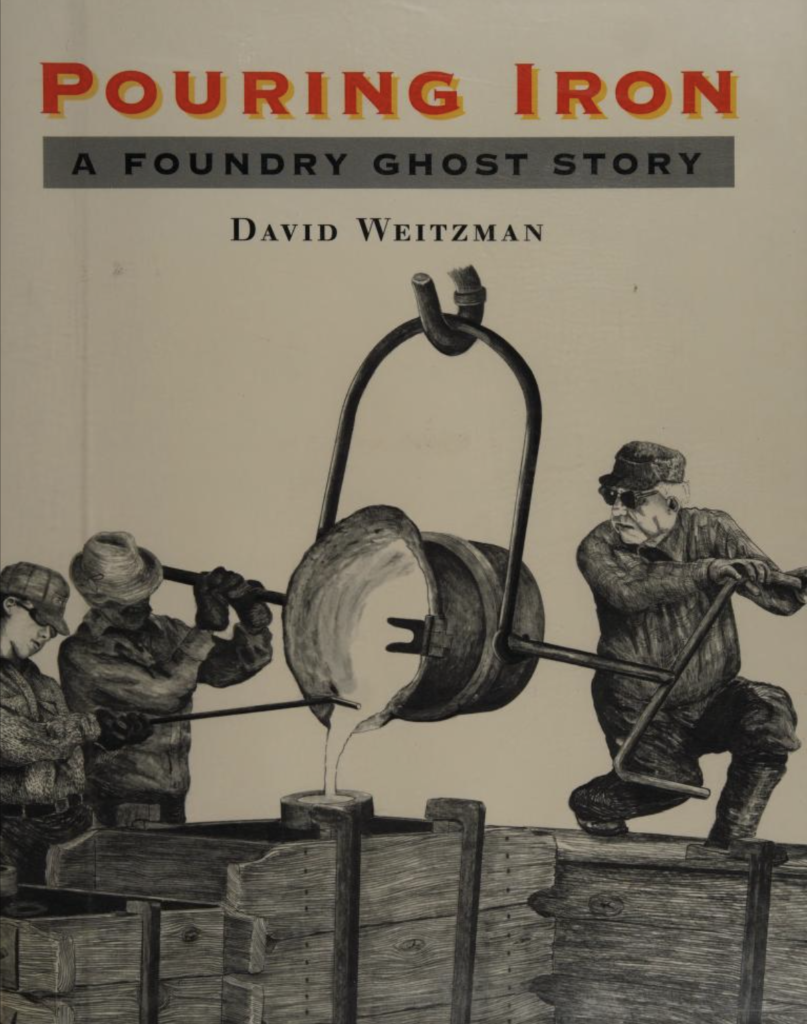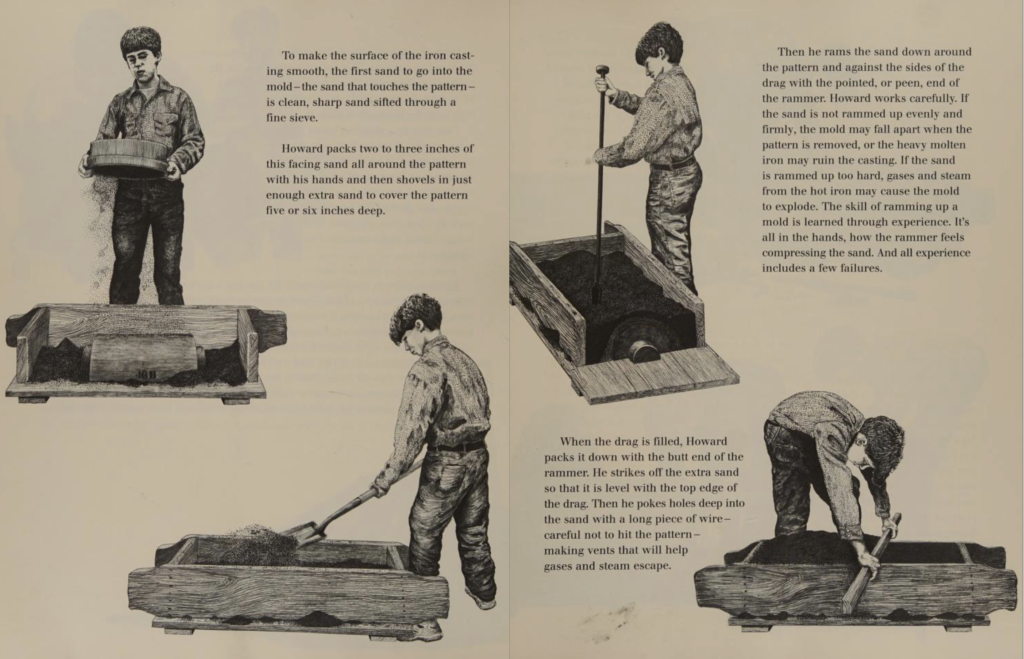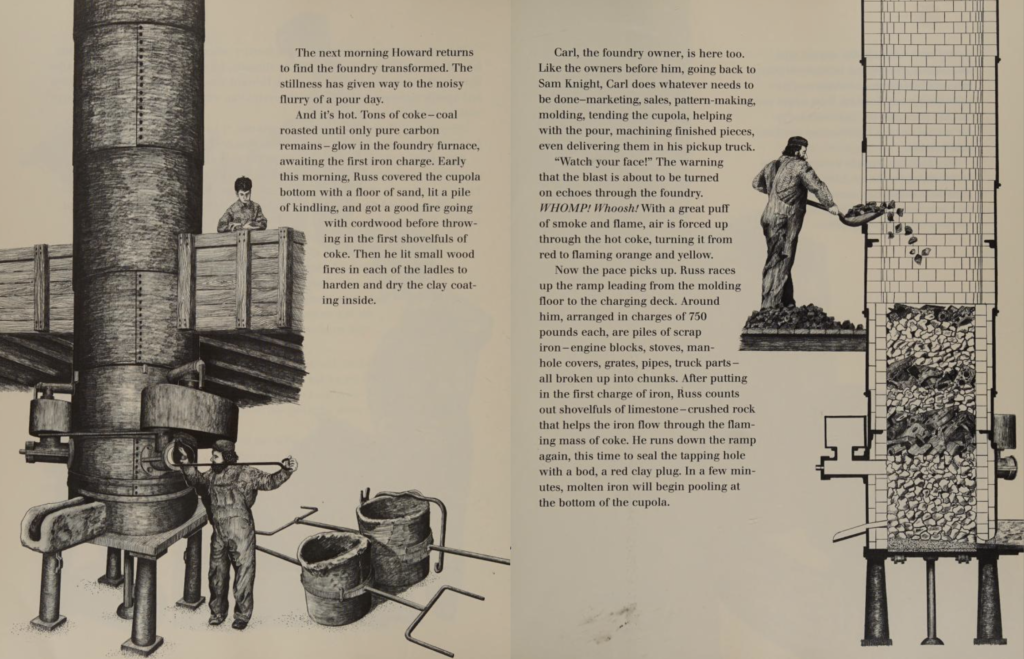
David Weitzman’s picture book Pouring Iron is about a foundry and a boy who, every time he goes to visit his grandparents, walks past a foundry and looks in, but it’s always too dark and dusty to see a thing. David Weitzman writes picture books about young people growing up in a trade that will become their life’s work. This particular book is on the business of ironworking.
The book begins when Howard (the boy in this story) goes to his grandparents’ house and, as usual, he looks into the foundry. But something is different, and that thing will change his weekend. It is different this time because the door to the foundry is open a crack when usually it is locked. When Howard looks in, the door opens, and an older man invites Howard into the foundry. When Howard enters the foundry, it is dark and dusty but not vacant. He hears the tink tink tink of metal striking metal. Howard walks toward the sound and sees a man working on a mold. The man’s name is Wendell. Wendell tells us that he came to work at the foundry when he was Howard’s age. When Howard is watching Wendell, a door opens. A man in a top hat and suit calls him in. Howard follows the man into a different room.
“‘I thought you might like to see my invention,’ the man says, ‘my name is Samuel Knight, and this is my patented water wheel.’”
Now, before I continue, I’d like to point out that Samuel Knight is the original foundry’s owner, and he is dead.

Howard moves on from Mr. Knight. He finds a man working on a template for the molds made of wood. It is going to be a table leg. If there is one error, all copies will have the same error. Howard tries to make a mold, which is quite tricky, but with the help of one of the workers, he turns it over and succeeds! The attention to detail in this book is impressive, especially when Howard is making the mold, and when they pour the iron into the molds.
The next half of the book is dedicated to the melting and pouring of iron. When pouring the iron into the molds, some of the iron is not fully melted, so a person uses a tool that blocks the unmelted iron from getting into the molds and ruining them.

I love this picture book. It seems like you are in the foundry. There is a twist at the end that I think is quite interesting. I hope you will be able to get your hands on this book so you will know what I mean. Sadly, this one is out of print and hard to find. We don’t even have a copy in our library and had to get it from inter-library loan. It is, however, available on InternetArchive to read for free.